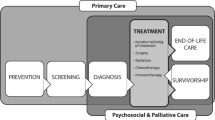Abstract
Background
Awareness of colorectal cancer and decision for colorectal cancer screening is influenced by multiple factors including ethnicity, level of education, and adherence to regular medical follow up.
Objective
Our survey aimed at assessing barriers to colorectal cancer screening among urban population.
Design
This study is a survey of the general population.
Setting
This study was made at a local community in the downtown area of a metropolitan city.
Patients/subjects
The study population for this survey included 2000 non-institutionalized residents from local community of Brooklyn downtown area of City of Brooklyn, NY, USA. All participants were 50 years or older.
Intervention
No intervention was done.
Main outcome measurement
The survey questionnaire collected information about demographic, socioeconomic level, awareness of various cancers and their screening methods, and awareness of screening colonoscopy.
Results
Colonoscopy was identified as the best screening test by 31 % of the subjects. Pain and discomfort was the major reason for not having a colonoscopy. The fear of a complication declined significantly after the first colonoscopy but fear of pain and discomfort increased. Difficulty with bowel preparation before a colonoscopy was a significant problem; it discouraged significant number of participants from having another colonoscopy.
Limitation
This study is limited by its small sample size.
Conclusion
Physician/family and peer influence seems important but influencing only a minority of subjects. Fear of complications should be allayed using accurate statistical information. Pain should be significantly diminished and/or eliminated during colonoscopy. Future research should focus to minimize complexity and discomfort associated with bowel preparation.

Similar content being viewed by others
Abbreviations
- CRC:
-
Colorectal cancer
- CT:
-
Computerized tomogram
- DNA:
-
Deoxynucleic acid
- Flex. Sig.:
-
Flexible sigmoidoscopy
- Laxative Prep:
-
Laxative preparation
- PCP:
-
Primary care physician
- MAC:
-
Monitored anesthesia care
- TNM:
-
Tumor node metastasis
- CT:
-
Computed tomography
- GI:
-
Gastrointestinal
- TV:
-
Television
References
American Cancer Society (2012) Colorectal cancer facts & figures. American Cancer Society, Atlanta
Jemal A, Murray T, Samuels A, Ghafoor A, Ward E, Thun MJ (2003) Cancer statistics, 2003. CA Cancer J Clin 53:5–26
Bebee TJ et al (2007) Assessing attitudes toward laxative preparation in colorectal cancer screening and effects on future testing: potential receptivity of computed tomographic colonography. Mayo Clin Proc 82:666–671
Jaroslaw R et al (2006) Colonoscopy in colorectal-cancer screening for detection of advanced neoplasia. N Engl J Med 355:1863
Callstrom M, Johnson C, Fletcher J et al (2001) CT Colonography without cathartic preparation: feasibility study. Radiology 219:693–698
Iannaccone R, Laghi A, Catalanco C et al (2004) Computed tomographic colonography without cathartic preparation for the detection of colorectal polyps. Gastroenterology 127:1300–1311
Johnson KT, Cartson MJ, Wentz RJ, Manduca A, Anderson SM, Johnson CD (2007) Development of a cathartic-free colorectal cancer screening test using virtual colonoscopy: a feasibility study. AJR AM J Roentgenol 188:29–36
Eddy DM, Nugent FW, Eddy JF et al (1987) Screening for colorectal cancer in high-risk population: results of a mathematical model. Gastroenterology 92:682–692
Muller AD, Sonnenberg A (1995) Protection by endoscopy against death from colorectal cancer: a case–control study among veterans. Arch Intern Med 155:1741–1748
Winawer SJ, Zauber AG, Ho MN et al (1993) National polyp study work group. Prevention of colorectal cancer by colonoscopic polypectomy. N Engl J Med 329:1977–1981
Wolf MS, Baker DW, Makoul G (2007) Physican–patient communication about colorectal cancer screening. Division of General Internal Medicine, Center for Communication and Medicine, Feinberg School of Medicine, Northwestern University, Chicago, IL, USA. J Gen Intern Med 22(11):1493–1499
Pignone M, Bucholtz D, Harris R (1999) Patient preferences for colon cancer screening. J Gen Intern Med 14(7):432–437
Davis TC, Dolan NC, Ferreira MR, Tomori C, Green KW, Sipler AM, Bennett CL (2001) The role of inadequate health literacy skills in colorectal cancer screening. Cancer Investig 19(2):193–200
Berkowitz Z, Hawkins NA, Peipins LA et al (2008) Beliefs, risk perceptions, and gaps in knowledge as barriers to colorectal cancer screening in older adults. J Am Geriatr Soc 56(2):307–314
Klabunde CN, Vernon SW, Nadel MR et al (2005) Barriers to colorectal cancer screening: a comparison of reports from primary care physicians and average-risk adults. Med Care 43(9):939–944
McAlerarney AS, Reeves KW, Dickinson SL et al (2008) Racial differences in colorectal cancer screening practices and knowledge within a low-income population. Cancer 112(2):391–398
Etzioni D, Ponce N, Babey S et al (2004) A population-based study of colorectal cancer test use: results from the 2001. Calif Health Interview Surv Cancer 101(11):2523–2623
Ellerbeck EF, Engelman KK, Gladden J, Mosier MC, Raju GS, Ahluwalia JS (2001) Direct observation of counseling on colorectal cancer in rural primary care practices. JGIM 16:697–700
Wee CC, McCarthy EP, Phillips RS (2005) Factors associated with colon cancer screening: the role of patient factors and physician counseling. Prev Med 41(1):23–29
Paddison JS, Yip MJ (2010) Exploratory study examining barriers to participation in colorectal cancer screening. Aust J Rural Health 18(1):11–15
Wu TY, Kao JY, Hsieh HF et al (2010) Effective colorectal cancer education for Asian Americans: a Michigan program. J Cancer Educ 25(2):146–152
Ma GX, Shive S, Tan Y et al (2009) Community-based colorectal cancer intervention in underserved Korean Americans. Cancer Epidemiol 33(5):381–386
Power E, Miles A, von Wagner C et al (2009) Uptake of colorectal cancer screening: system, provider and individual factors and strategies to improve participation. Future Oncol 5(9):1371–1388
Author information
Authors and Affiliations
Corresponding author
Rights and permissions
About this article
Cite this article
Ghevariya, V., Duddempudi, S., Ghevariya, N. et al. Barriers to screening colonoscopy in an urban population: a study to help focus further efforts to attain full compliance. Int J Colorectal Dis 28, 1497–1503 (2013). https://doi.org/10.1007/s00384-013-1708-7
Accepted:
Published:
Issue Date:
DOI: https://doi.org/10.1007/s00384-013-1708-7




